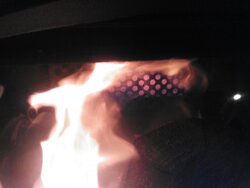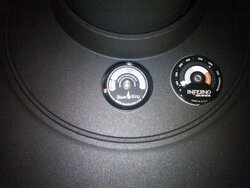My Condar catalytic probe thermometer seems to keep coming our of adjustment. The bottom end of the scale - 2 small tick marks below the lowest large tick mark - seems to represent 60 degrees; so the needle should be near that lowest small tick mark when the stove is dead cold. So I adjust it by loosening the nuts and rotating the scale. But then after a few fires it'll drift to where it's a couple hundred degrees' worth below there - far enough that the 500 degree reading (where you want to engage cat) is WAY off.
I tried calling Condar but got pretty much blown off (I think). The receptionist first asked me when I bought it and said well the warranty is only one year, so I just need to buy a new one. When I persisted, she said I could send mine in for a "repair", but got pretty evasive when I asked what could be broken to cause this problem ("maybe the weld is broken", really ?).
Anybody else had this problem ?
I tried calling Condar but got pretty much blown off (I think). The receptionist first asked me when I bought it and said well the warranty is only one year, so I just need to buy a new one. When I persisted, she said I could send mine in for a "repair", but got pretty evasive when I asked what could be broken to cause this problem ("maybe the weld is broken", really ?).
Anybody else had this problem ?



